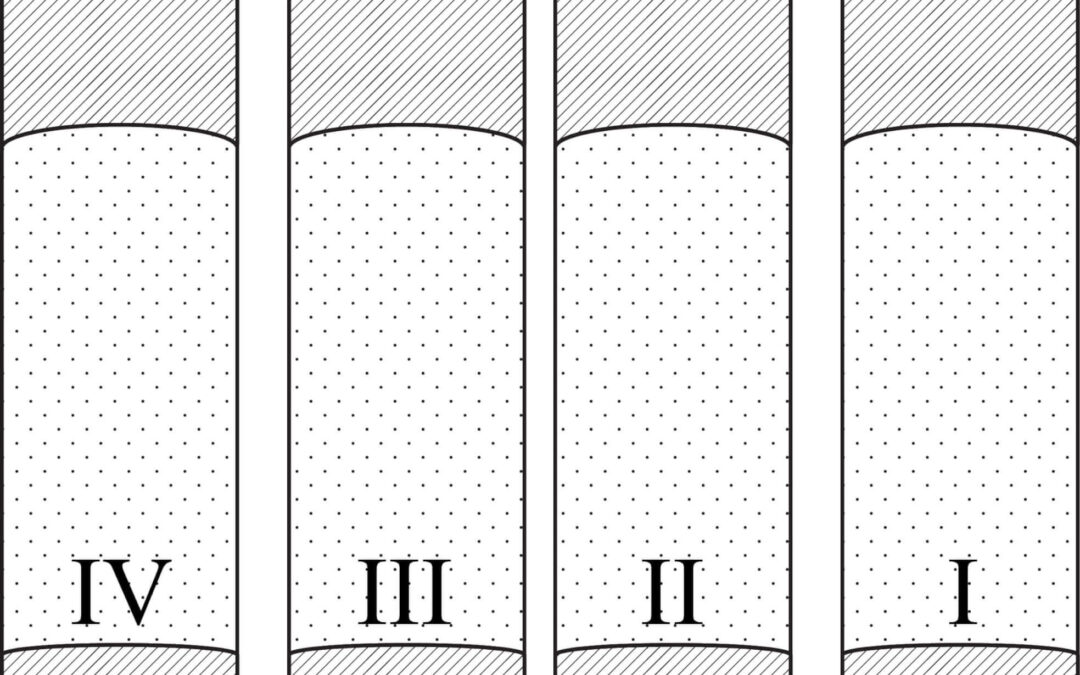Image description
The image presents four book tomes, visualized laterally, from the shelf-back.
The books are represented through a texture of rare points covered towards the two sides with a strip of golden thread, presented through thin, oblique lines.
The upper labels write: „Encyclopedia of Romania”.
In the lower part of each encyclopedia we can see its name: tome one is titled”Statul”, tome two is called „Țara Românească”, tome three and four are called „Economia națională”.
Each shelf-back contains the number of the encyclopedia tome, from four to one and it is represented through bolded Roman numbers.
Historical information
The four volumes of the Encyclopedia of Romania consist of studies regarding the past and present of Romanian society, written by the main specialists and intellectuals of Greater Romania. In the first volume’s foreword, Dimitrie Gusti, the main promoter of this project, wrote enthusiastically that after „years of work an collective effort of our specialists in all fields, we finally start to see the image of a Romanian country and Romanian people, the way it was created the day following the Union”. The trigger was the necessity to create a great work to mark the glory of the Romanian nation. Furthermore, Gusti mentioned that the main part of this Encyclopedia will be the Romanian nation, becoming the image of „the time we live in; thus it will be the expression of the life of an era” [Bibliography 1].
Constantin Diaconovich published in 1896 a similar project, supported by ASTRA (The Transylvanian Association for Romanian Culture and Literature) – „The Romanian Encyclopedia”. The existence of Greater Romania as one state which reunited all Romanian historical principalities imposed the need for a new encyclopedia. Therefore, the elaboration of this work was a joint effort of ASTRA, Romanian Social Institute and Royal Cultural Foundations, establishing The Scientific Association for Encyclopedia of Romania, led by Dimitrie Gusti and under the patronage of His Majesty Carol II, as coordination forum.
This work was first published in 1938, during royal dictatorship, becoming also a propaganda effort. In this regard, we must notice Cezar Petrescu’s study for this first volume of the Encyclopedia, entitled “The reign of the King Carol II”, legitimizing the political regime introduced in 1938 and portraiting him as “The King of Culture, of peasants and youth” [Bibliography 2].
The first volume, “The State”, started with a chapter by Dimitrie Gusti, where he stated that “the historical past […] is part of the nation who is currently becoming self-aware, who has a destiny and a mission” [Bibliography 3]. The volume includes geographical studies of Romania (Vintilă Mihăilescu), historical (Nicolae Iorga, Constantin C. Giurescu) or demographical (Sabin Manuilă). It also includes studies regarding the political and legal organization of Greater Romania and regarding the evolution of education or religious cults.
The second volume, “Wallachia”, covers the administrative divisions of Romania, including the monograph of all Romanian counties.
The third and fourth volumes covered national economy. They were published in 1943, after Carol II’s abdication. The initial project was included two more volumes to cover national culture, which have never been published.
Bibliography
- Enciclopedia României, vol. I: Statul, București, Imprimeria Națională, p. VIII.
- Cezar Petrescu, „Domnia regelui Carol al II-lea”, in Enciclopedia României, vol. I: Statul, p. 945-970.
- Dimitrie Gusti, „Știința Națiunii”, in Enciclopedia României, vol. I: Statul, p. 18.
Download image:
http://imaginitactile.ro/images/e/e2/Enciclopedia-romaniei.jpg


